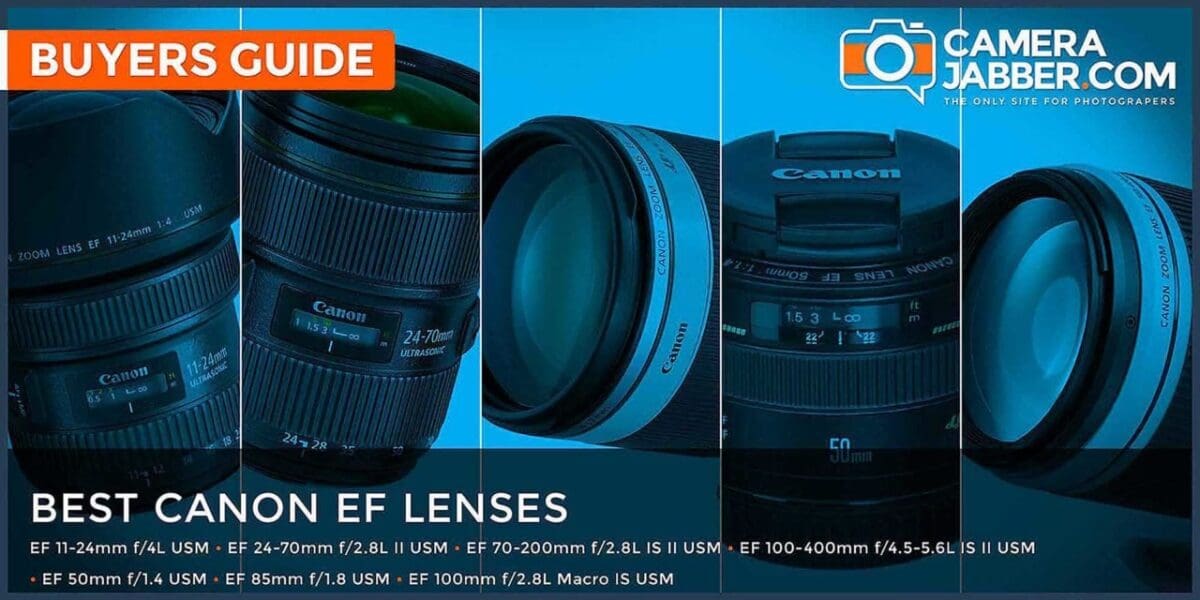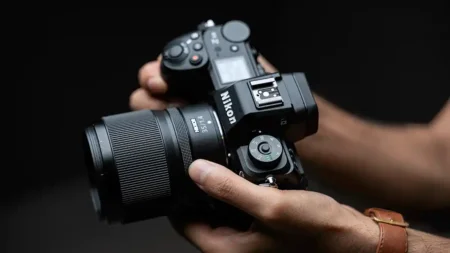Make the most of your full-frame Canon SLR with a collection of high-performance lenses. Here are the best Canon EF lenses we’d recommend when starting your collection.
Any camera body is only as good as the lens you put on it, so it pays to buy the best. Or does it? Some of Canon’s top-flight lenses are extremely expensive so, while they might be built to last a lifetime and deliver fabulous image quality, they’re not necessarily the best value for money. Set your sights a little lower and you can often get great performance without spending over the odds.
We’ve put together a collection of our favourite Canon full-frame compatible lenses for all sorts of shooting scenarios. Some of the featured lenses really are top-dollar models but, in these cases, we’ve also included budget own-brand alternatives that still combine impressive handling and image quality, and are rather more affordable. So, without further ado, let’s check out the best-buy Canon EF lenses on the market.
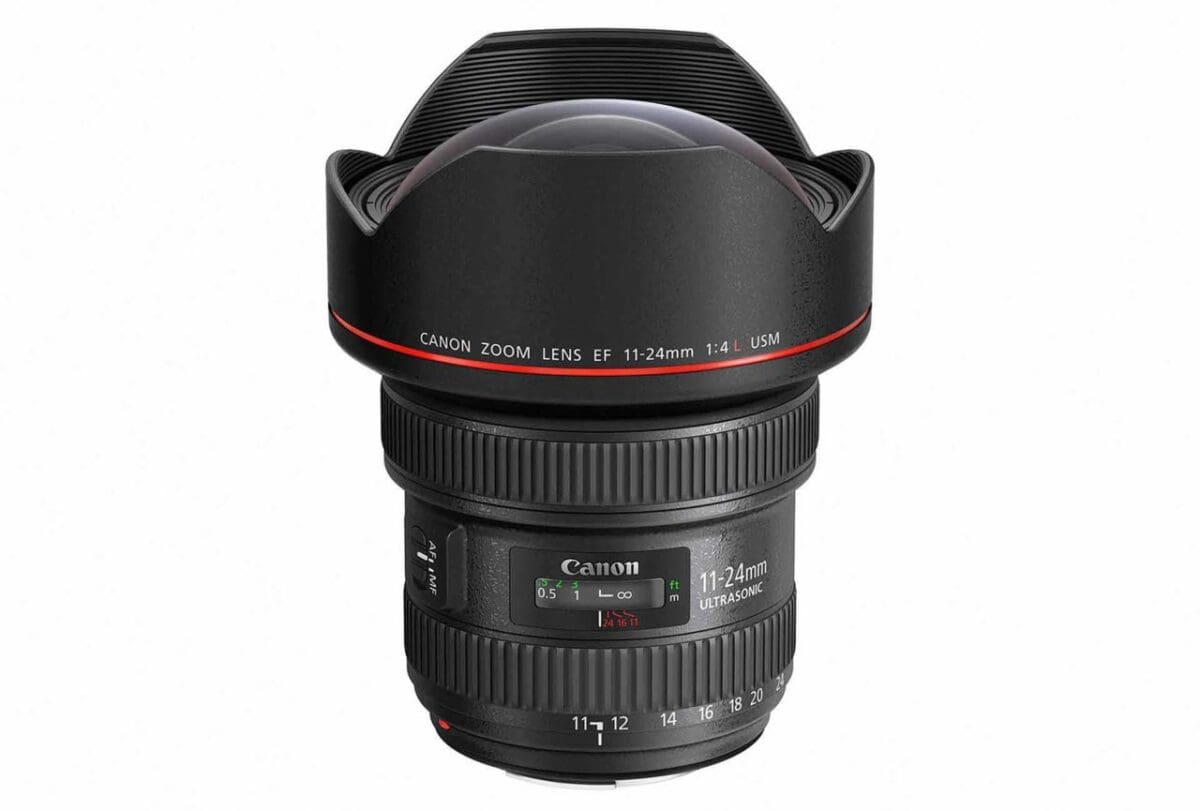
Best Canon EF lenses: 01 Canon EF 11-24mm f/4L USM, £2,800
Type
Wide-angle zoom
Put your eye to the viewfinder and feel the wow factor
Focal length: 11-24mm
Aperture range: f/4 to f/22
Autofocus motor: Ring-type ultrasonic
Minimum focus distance: 0.28m
Maximum magnification factor: 0.16x
Image stabilizer: No
Weather seals: Yes
Filter thread: N/A
Dimensions: 108x132mm | Weight: 1,180g
Billed as the widest-angle rectilinear zoom lens in the world, the EF 11-24mm gives an eye-popping view that seems to be almost wrap-around in its extent. You can shoehorn pretty much anything into the frame, from cramped interiors to sprawling cityscapes or expansive mountain ranges.
What’s more, with a shortest focus distance of just 28cm, you can really exaggerate perspective for creative effect.
Centre-sharpness is superb even when shooting wide-open and, if you stop down to f/8, even the extreme corners become amazingly sharp. This is no mean feat for such a wide-angle lens, aided by the inclusion of UD (Ultra-low Dispersion) and Super UD elements helps, which also help to keep colour fringing to a minimum.
Noticeable barrel distortion at the widest 11mm zoom setting is only to be expected but it’s nevertheless well controlled, and distortion is greatly reduced in the mid to long sector of the zoom range.
The only catch is that, while the maximum viewing angle is eye-popping, the asking price is truly eye-watering.
Best for
Interiors, architecture, landscapes, exaggerated perspective effects.
Budget option
Canon EF 16-35mm f/4L IS USM, £685
Pro
Fabulous image quality in all respects, backed up with solid construction, all at an affordable price.
Con
Nowhere near as wide-angle as the EF 11-24mm, but it’s still a good extension to a standard zoom.
Also consider
Sigma 12-24mm f/4.5-5.6 II DG HSM, £530
Pro
The maximum viewing angle is very nearly as wide as from the Canon 11-24mm, and it’s less than a fifth of the price.
Con
Not as sharp as the Canon lens, especially in the corners of the image, and it’s not weather-sealed.
Tamron SP 15-30mm f/2.8 Di VC USD, £850
Pro
Very good build quality and optical performance, and it has the added bonus of image stabilization.
Con
The maximum viewing angle is less extreme than from the Canon 11-24mm and Sigma 12-24mm lenses.
SEE MORE: Best Canon EF-S lenses to start your collection
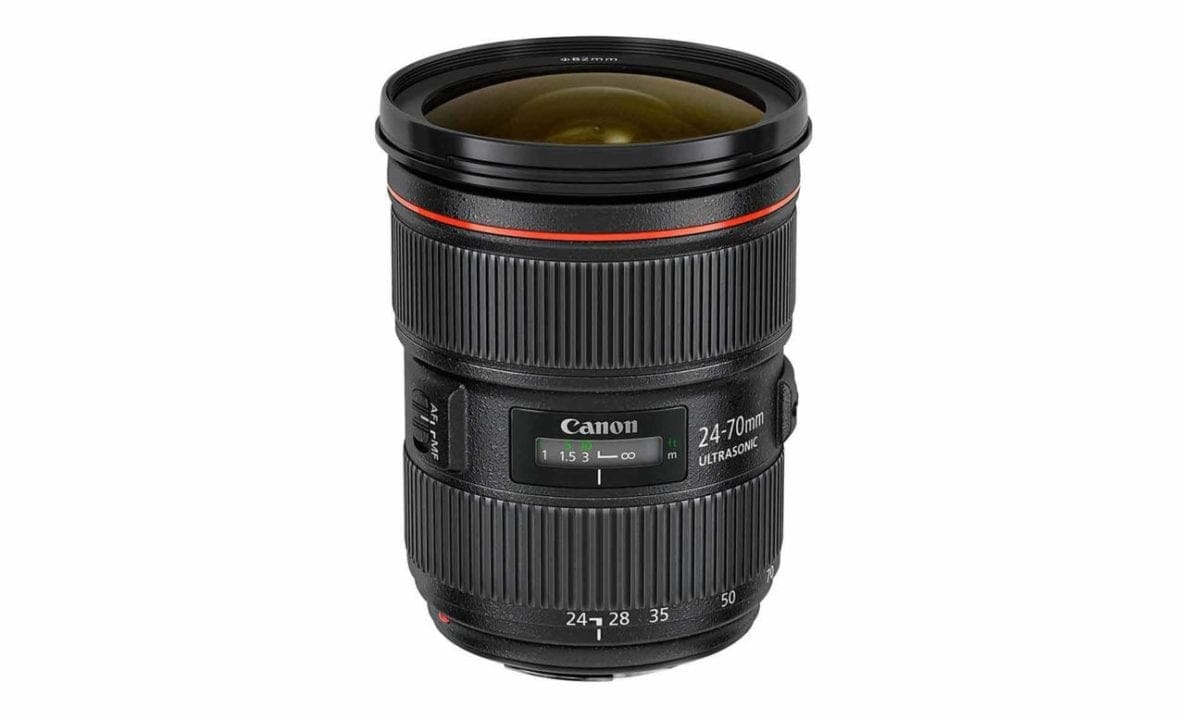
Best Canon EF lenses: 02 Canon EF 24-70mm f/2.8L II USM, £1,400
Type
Standard zoom
A tough general purpose lens that’ll keep going all day, every day
Focal length: 24-70mm
Aperture range: f/2.8 to f/22
Autofocus motor: Ring-type ultrasonic
Minimum focus distance: 0.38m
Maximum magnification factor: 0.21x
Image stabilizer: No
Weather seals: Yes
Filter thread: 82mm
Dimensions: 89x113mm | Weight: 805g
A major revamp of Canon’s original top-flight standard zoom, the Mk II boasts an all-new optical design and construction. Greater sharpness and contrast have been achieved, along with a reduction in colour fringing, thanks to the addition of a Super UD element, along with two UD elements.
The new lens is also more resistant to ghosting and flare, thanks to Super Spectra coatings being applied to each and every one of the 18 optical elements.
Despite being a little smaller than the original, the Mk II is better built with a stronger construction, more able to take the knocks of a busy pro-grade lifestyle. It’s weather-sealed and, to repel moisture, the front and rear elements have a fluorine coating.
Even when shooting at f/2.8, centre-sharpness and contrast remain excellent throughout the entire zoom range. Corner-sharpness catches up if you stop down to f/5.6, and colour fringing is negligible. Distortion is also well controlled at 24mm, dying away completely at the long end of the zoom range.
Best for
General shooting, travel, photojournalism.
Budget option
Canon EF 24-70mm f/4L IS USM, £675
Pro
With impressive build and image qualities, it also adds an image stabilizer that’s lacking in Canon’s f/2.8 lens.
Con
It’s an f/stop slower than Canon’s top-flight 24-70mm f/2.8 lens and is less robust.
Also consider
Canon EF 24-105mm f/3.5-5.6 IS STM, £375
Pro
Extended telephoto reach, compared with a 24-70mm lens, smooth and silent stepping motor-based autofocus system.
Con
The widest available aperture is relatively narrow towards the long end of the zoom range, and it’s not weather-sealed.
Tamron SP 24-70mm f/2.8 Di VC USD, £680
Pro
Somewhat unique as a ‘fast’ Canon-fit standard zoom, it combines an f/2.8 constant aperture with image stabilization.
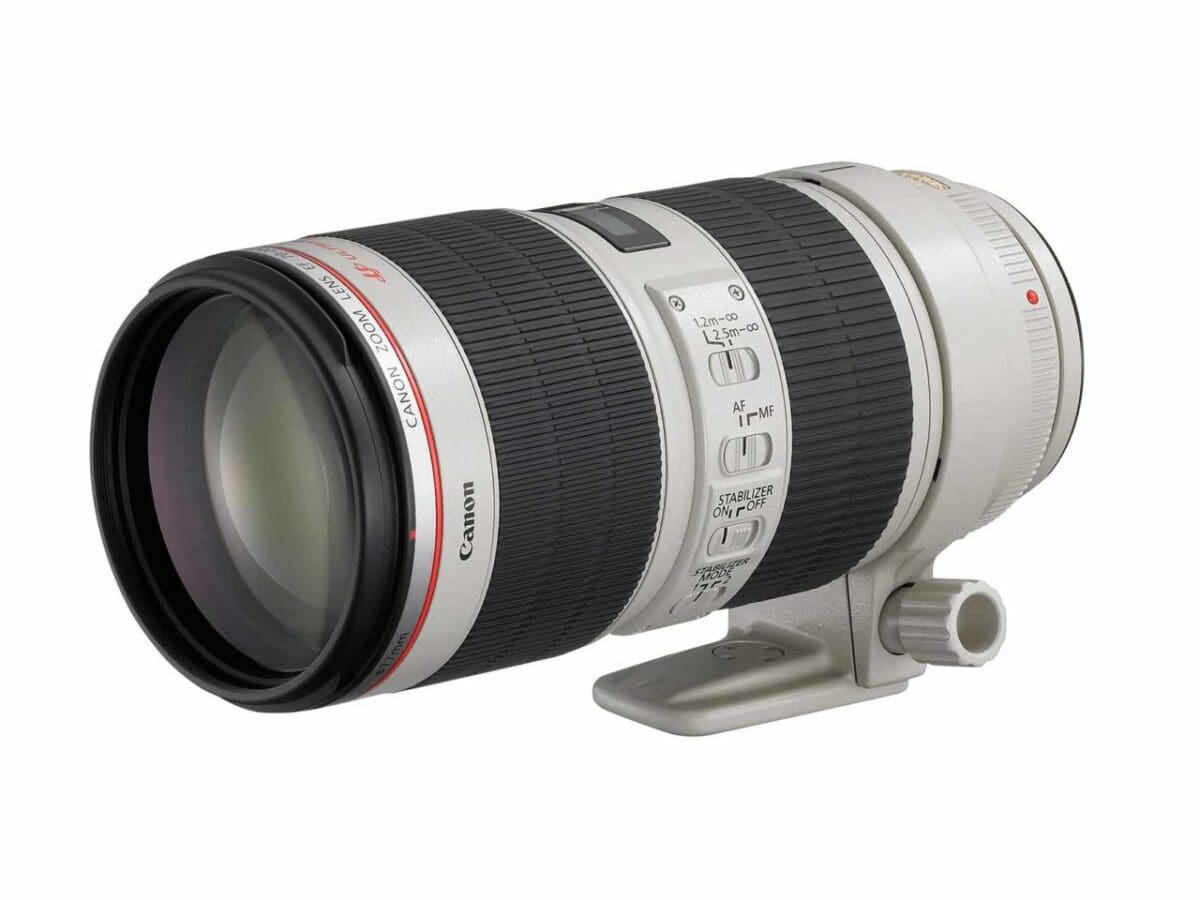
Con
A little lacking in sharpness towards the extreme corners of the frame.
Best Canon EF lenses: 03 Canon EF 70-200mm f/2.8L IS II USM, £1,500
Type
Telephoto zoom
A seriously top-grade telephoto for sports and event photography
Focal length: 70-200mm
Aperture range: f/2.8 to f/32
Autofocus motor: Ring-type ultrasonic
Minimum focus distance: 1.2m
Maximum magnification factor: 0.21x
Image stabilizer: Yes
Weather seals: Yes
Filter thread: 77mm
Dimensions: 89x199mm | Weight: 1,490g
Another of Canon’s Mk II lenses, this is the ideal telephoto supplement to the 24-70mm that we’re also featuring in this collection. Again, it has a fast and constant f/2.8 aperture and a robust build.
Indeed, it has a magnesium alloy barrel that adds strength while keeping the weight down. The real beauty lies within, however, with exotic fluorite glass and five UD elements.
As you’d expect in this class of lens, a tripod mounting collar is supplied, which works well to centralise weight and to enable easy swapping between landscape and portrait orientation shooting.
Even so, the lens is lightweight enough to facilitate comfortable handheld shooting, which benefits from a four-stop image stabilizer, switchable between static and panning modes.
Also typical of modern examples of this type of lens, the zoom and focus mechanisms are fully internal, so the lens doesn’t physically extend during zooming or focusing.
The ring-type autofocus system is lightning-fast and highly accurate, helping to ensure super-sharp image quality which remains impressive at all zoom settings. This is true even when shooting wide-open, where you can also benefit from beautiful bokeh.
Best for
Action sports, wildlife, events, weddings and general telephoto shooting.
Budget option
Canon EF 70-300mm f/4-5.6L IS USM, £1,030
Pro
Greater telephoto reach than the 70-200mm in a smaller and more lightweight package.
Con
The construction isn’t as tough and the variable-aperture design means the widest available aperture shrinks to f/5.6 at the long end of the zoom range.
Also consider
Sigma 70-200mm f/2.8 EX DG OS HSM, £730
Pro
It has a fast and constant f/2.8 aperture and it’s stabilized, but is half the price of the equivalent Canon.
Con
Construction is less rugged than that of the Canon, it’s not as sharp and lacks weather-seals.
Tamron SP 70-200mm f/2.8 Di VC USD, £930
Pro
The usual ring-type ultrasonic autofocus and optical stabilization systems are included, while weather-seals are more of a surprise considering the price.
Con
Not quite as sharp or as strongly built as the equivalent Canon lens, but it’s very good value for money.
SEE MORE: Camera lens wishlist: what to look for when upgrading from an 18-55mm
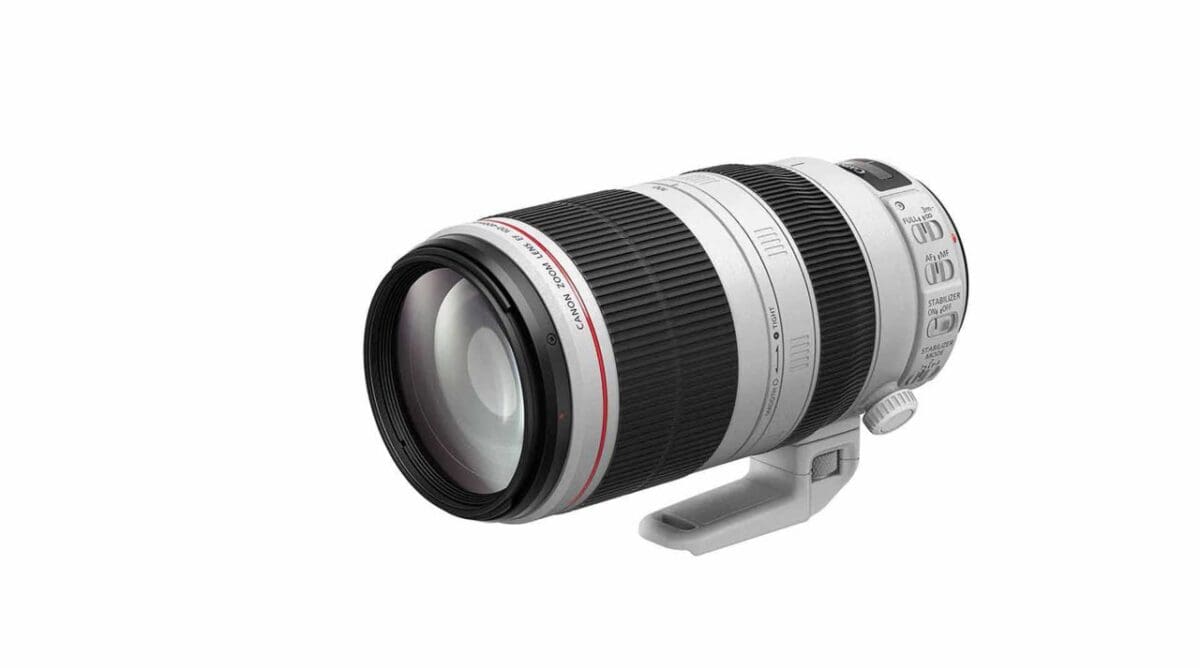
Best Canon EF lenses: 04 Canon EF 100-400mm f/4.5-5.6L IS II USM, £1,800
Type
Super-telephoto zoom
Get closer to the action with this mighty zoom lens
Focal length: 100-400mm
Aperture range: f/4.5-5.6 to f/32-40
Autofocus motor: Ring-type ultrasonic
Minimum focus distance: 0.98m
Maximum magnification factor: 0.31x
Image stabilizer: Yes
Weather seals: Yes
Filter thread: 77mm
Dimensions: 94x193mm | Weight: 1,640g
Anybody who’s ever shot with a 70-200mm or 70-300mm telephoto zoom on an APS-C format camera will feel short-changed when using a full-frame body. Without the 1.6x crop factor, you simply don’t get anywhere near as much telephoto pulling power.
One solution is to fit a 2x tele-converter or ‘extender’ to a 70-200mm lens, but this will tend to degrade sharpness and autofocus speed to some extent. Canon’s revamped 100-400mm Mk II lens is designed from the ground up to give you super-telephoto reach, with excellent all-round performance.
Unlike the 70-200mm lens also featured in this round-up, this one physically extends at longer zoom settings. However, gone is the trombone-style push-pull mechanism of the original 100-400mm, replaced by a more conventional rotary zoom ring.
It’s only slightly heavier than the 70-200mm and handheld shooting benefits from a four-stop image stabilizer with three switchable operating modes.
These include static and panning modes, plus a third option that only applies stabilization during exposures, so it doesn’t interfere with what you see through the viewfinder.
Sharpness, autofocus speed and all other areas of performance are very good indeed, making the Mk II a big improvement over Canon’s older 100-400mm lens.
Best for
Long-range sports and wildlife, bird and aircraft photography.
Also consider
Sigma 150-600mm f/5-6.3 DG OS HSM | S, £1,200
Pro
Solid, weather-sealed construction, refined handling and very good image quality, along with much more powerful telephoto reach than the Canon 100-400mm lens.
Con
At 2.8kg, it’s much heavier than the Canon 100-400mm, but Sigma’s 150-600mm C (Contemporary) lens is more manageable and cheaper to buy.
Tamron SP 150-600mm f/5-6.3 Di VC USD, £740
Pro
Matches the Sigma 150-600mm Sports and Contemporary lenses for zoom range.
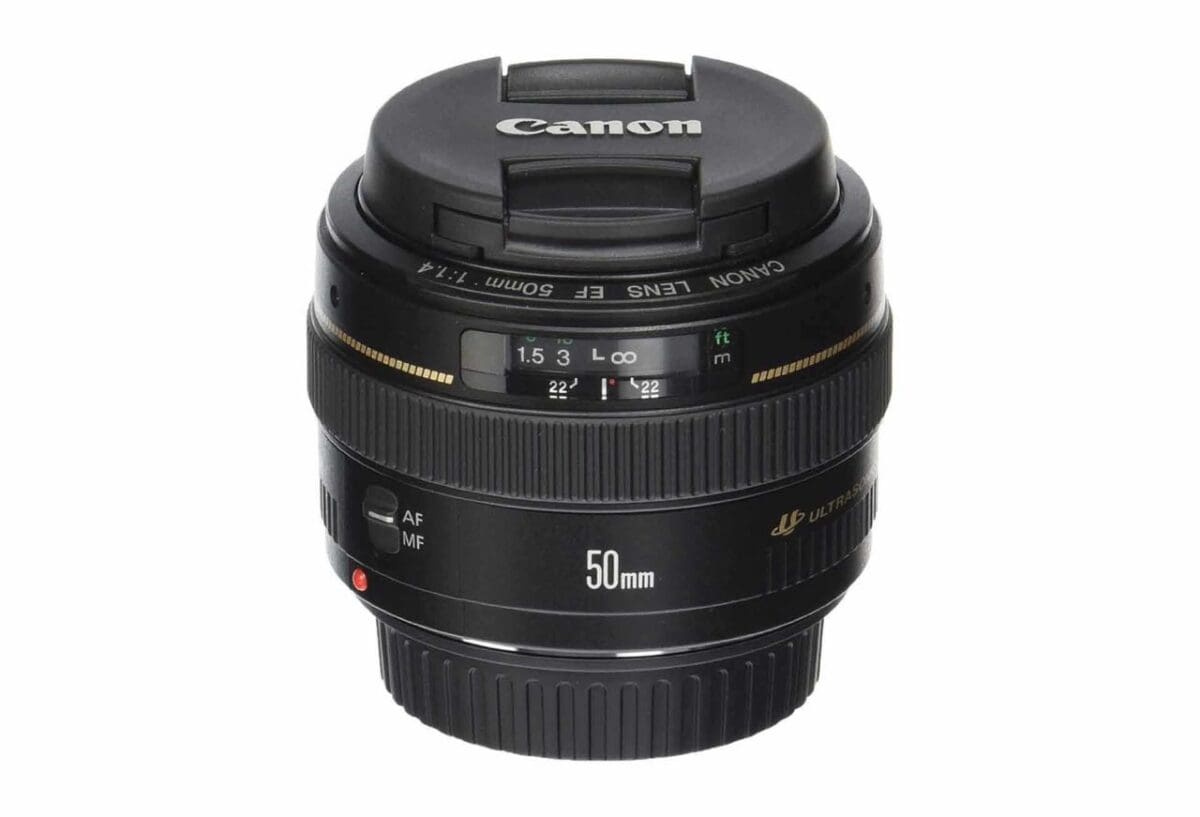
Con
Not as strongly built as the Canon 100-400mm or Sigma S (Sport) lens, but that’s reflected in the price.
Best Canon EF lenses: 05 Canon EF 50mm f/1.4 USM, £235
Type
Standard prime
This high-quality prime lens is both sharp and refreshingly affordable
Focal length: 80mm
Aperture range: f/1.4 to f/22
Autofocus motor: Ultrasonic motor
Minimum focus distance: 0.45m
Maximum magnification factor: 0.15x
Image stabilizer: No
Weather seals: No
Filter thread: 58mm
Dimensions: 74x51mm | Weight: 290g
You can’t beat a 50mm prime lens for delivering a natural viewing perspective while also enabling quick shutter speeds under dull lighting, and delivering a tight depth of field. This f/1.4 optic ticks all the right boxes, and is far less expensive than most of the lenses we’re featuring in this collection.
Sure enough, Canon also makes a 50mm f/1.2 lens but it’s twice as heavy, four times as expensive and who really needs that extra third of an f/stop anyway?
Build quality isn’t of such an enormously high standard as in the f/1.2 lens but the f/1.4 is perfectly able to withstand the rigours of frequent use. It lacks weather-seals and has ultrasonic motor-driven autofocus, rather than a ring-type system.
Even so, autofocus speed is pretty rapid and, unusually for a motor-driven system, comes complete with full-time manual override. The focus ring also remains stationery during autofocus, which is a bonus for handling.
Sharpness isn’t particularly impressive at f/1.4, but the lens really gets into its stride at f/2.8 and beyond, with excellent all-round image quality.
Best for
General photography where you need fast shutter speeds or a tight depth of field.
Also consider
Sigma 50mm f/1.4 DG HSM | A, £580
Pro
Tough construction and superlative image quality that combines excellent sharpness and creamy bokeh.
Con
Much bigger and heavier than the Canon 50mm f/1.4 lens, and considerably pricier.
Tamron SP 45mm f/1.8 SP Di VC USD, £500
Pro
It adds image stabilization and weather-seals, which are lacking on both of the Canon and Sigma 50mm lenses.
Con
The widest available aperture of f/1.8 is two-thirds of an f/stop slower than in the Canon and Sigma.
SEE MORE: What lens is best for your camera? Here’s how to choose…
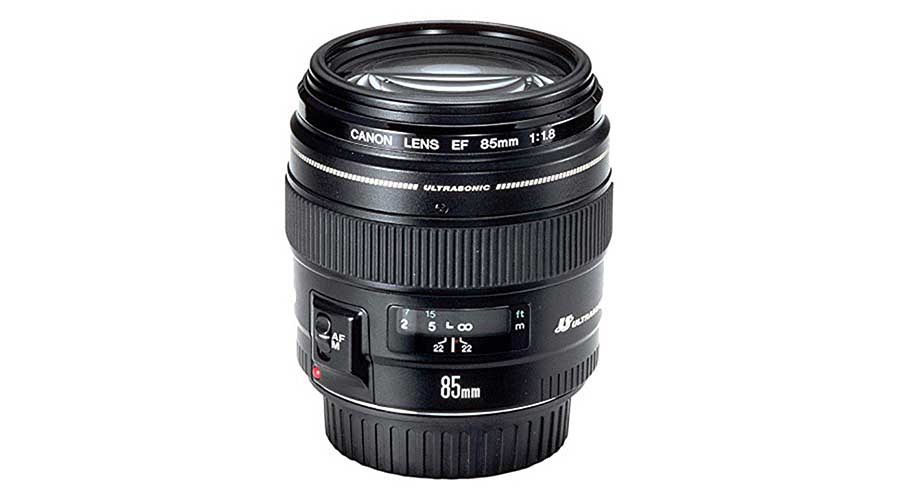
Best Canon EF lenses: 06 Canon EF 85mm f/1.8 USM, £240
Type
Portrait prime
Great portraiture is available on a surprisingly shoestring budget
Focal length: 85mm
Aperture range: f/1.8 to f/22
Autofocus motor: Ring-type ultrasonic
Minimum focus distance: 0.85m
Maximum magnification factor: 0.13x
Image stabilizer: No
Weather seals: No
Filter thread: 58mm
Dimensions: 75x72mm | Weight: 425g
Just like with its 50mm offerings, Canon markets a large, fast, big-money option in its 85mm lens line-up, again with an f/1.2 aperture rating.
This time, the next step down is to an f/1.8 rather than an f/1.4 lens, but the 85mm f/1.8 costs less than one-sixth of the price of the f/1.2 edition.
The combination of an 85mm focal length with an f/1.8 aperture enables a really tight depth of field, so you have to question the advantage of an f/1.2 lens for portraiture, unless you’re determined to blur people’s ears and noses when you’re focusing on their eyes.
As with the 50mm f/1.4 lens also included in this round-up, the 85mm f/1.8 is slightly soft at its widest available aperture. This can actually be a bonus for portraiture, especially if your subject doesn’t have absolutely flawless skin.
Even so, the lens is super-sharp between f/2.8 and f/11, making it useful for any short telephoto shooting scenarios. Autofocus speed is rapid and, unlike the 50mm f/1.4 lens, this one features ring-type ultrasonic autofocus.
Best for
Portraiture, short telephoto shooting when sharpness and fast shutter speeds or a tight depth of field are required.
Also consider
Sigma 85mm f/1.4 EX DG HSM, £620
Pro
Two-thirds of an f/stop faster than the Canon 85mm f/1.4 lens, and it’s strongly built.
Con
A weightier option than the Canon lens, and it’s more than twice the price.
Tamron SP 85mm f/1.8 Di VC USD, £750
Pro
Excellent image quality backed up by a strong, weather-sealed build, and it includes optical stabilization.
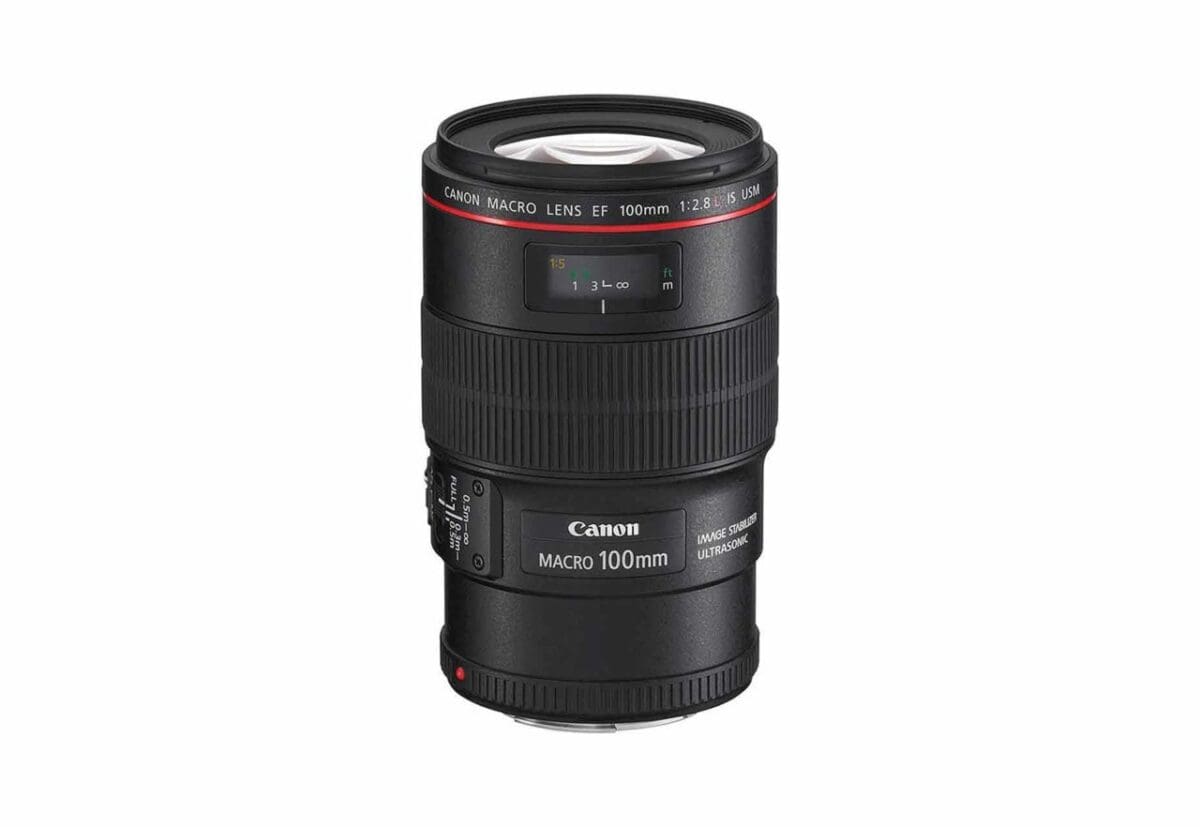
Con
Comparatively expensive for an 85mm f/1.8 lens.
Best Canon EF lenses: 07 Canon EF 100mm f/2.8L Macro IS USM, £620
Type
Macro prime
Here’s a lens that delivers exquisite attention to detail
Focal length: 100mm
Aperture range: f/2.8 to f/32
Autofocus motor: Ring-type ultrasonic
Minimum focus distance: 0.3m
Maximum magnification factor: 1.0x
Image stabilizer: Yes
Weather seals: Yes
Filter thread: 67mm
Dimensions: 78x123mm | Weight: 625g
Like other full macro lenses, this one has a 1.0x or 1:1 maximum magnification factor, so it can reproduce small objects at full life size on the image sensor of a camera, when used at its minimum focus distance.
Typical L-series luxuries include weather-seals and a hood that’s supplied with the lens instead of being sold as optional extra.
That’s a bit of a saving but you’ll still need to splash a lot of extra cash if you want the genuine edition of Canon’s optional ‘D-type’ tripod mounting ring.
A headline feature of this lens is that it has a specially designed ‘hybrid’ image stabilizer. Whereas the stabilizers fitted to many other Canon lenses correct for vibration in handheld photography, this one also corrects for axial shift (up-down or side-to-side movement).
This makes it much more effective when shooting close-ups. Before we get too carried away, however, Canon states that the four-stop benefit of the stabilizer shrinks to three stops at 0.5x magnification and just two stops at full 1.0x magnification.
Even so, that’s better than nothing and helps to make consistently sharp, handheld close-up photography a real possibility. As you’d hope from a macro lens, this one remains nicely sharp even when shooting at very narrow apertures.
Best for
All creatures small and very small, and other tiny objects, but it also works well as a short telephoto for general shooting.
Also consider
Sigma 105mm f/2.8 Macro EX DG OS HSM, £330
Pro
A high-performance macro lens with excellent handling and stabilization, at a bargain price.
Con
The optical stabilizer is a traditional type rather than offering a hybrid advantage.
Tamron SP 90mm f/2.8 Di Macro VC USD, £580
Pro
New and improved, the latest edition of this lens boasts great build and image qualities, plus hybrid stabilization.
Con
It’s almost as expensive as the equivalent Canon own-brand lens.
READ MORE
Best Nikon FX lenses to start your collection
Best Nikon DX lenses to start your collection
